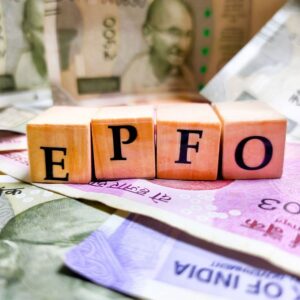
How much should you invest in Sovereign Gold Bond 2023-24 Series III: After conferring with the RBI, the Indian government has agreed to grant investors who apply online and make their payment digitally a reduction of Rs 50 per gramme off the issue price.
The Sovereign Gold Bond (SGB) Scheme Series III for the fiscal year 2023–2024 has been announced by the Reserve Bank of India (RBI). It is slated to commence on December 18 and finish on December 22. The notable increase in gold prices, which exceeded a 10 percent gain in 2023 and surprised observers despite a difficult high-interest rate environment, is the driving force behind this publication.
For these bonds, the value is determined by taking the simple average of the closing price of 999-purity gold, per India Bullion and Jewellers Association (IBJA).
In a notification on December 15, the RBI stated that the nominal value of the bond is ₹6,199 per gram of gold, based on the simple average of closing prices (published by the IBJA) for gold of 999 purity of the final three working days of the week prior to the subscription period, i.e., December 13, December 14, and December 15, 2023.
What are Sovereign Gold Bonds (SGBs) by RBI?
A respectable substitute for holding actual gold is to invest in Sovereign Gold Bonds (SGBs), which are government securities valued in kilos of gold. The issue price must be paid in cash by investors, who will also get a cash redemption when the investment matures.
These bonds, which are issued by the Reserve Bank of India on behalf of the Indian government, provide protection to investors by guaranteeing that they would be redeemed at the current gold market price. Because of this feature, which ensures the value of the initial gold investment, SGBs are a better choice than physical gold.
Who all can invest in SGBs 2023–24 Series III?
Sovereign Gold Bonds (SGBs) can be purchased by anybody who meets the requirements of the Foreign Exchange Management Act, 1999 for residency in India, including individuals, trusts, universities, charitable organizations, and Hindu Undivided Families (HUFs).
Individual investors are allowed to keep the SGB until its early redemption or maturity if their residence status changes from resident to non-resident.
Fatima Naqvi, Partner, Optimyze Finance LLP states, “Before you invest in Sovereign Gold bonds, here are a few things to know. Being ‘Sovereign’ Bonds, they are backed by the Government of India, hence liquidity risk at maturity is at its minimal. These bonds are more attractive to risk-averse Investors who prefer guaranteed returns and minimal maintenance costs, making them preferable to all other investment options, even investments in property, for that matter.
Due to the ease of applying through online net banking, many individuals and HUFs see SGBs as a good alternative to gifting gold coins to their children in wedding. Investors can enjoy the locker-free possession of gold through SGBs and gradually modernise their traditional ways of holding physical gold.
Ticket size being as low as 1 gram i.e. just Rs 6199 for individual investors and in multiples of 1 gram, up to a maximum 4 kg enables the individuals to invest in multiple tranches for all of their kids by applying thru multiple net banking accounts. A further discount of Rs 50 per gram to those investors who apply online and payment is made through digital mode makes the SGBs all the more attractive.
One major benefit is the exemption from Capital gains tax at redemption. Investors can leverage the tax benefit by holding the bonds till maturity and avoid capital gains tax at around 20% which gets levied if these bonds are sold any-time before the maturity date. Charitable trusts which have accumulated money at the end of the year can invest in SGBs to leverage the sovereign guarantee at maturity.”
How much interest rate will be paid?
A fixed interest rate of 2.50% annually is available on the original investment amount of Sovereign Gold Bonds (SGBs). Twice a year, the interest is credited to the investor’s bank account, and the principal amount invested plus the final interest payment are done when the bond matures.
SGBs are issued in denominations of one gram or multiples thereof, with a one gram minimum investment required. The maximum subscription amount for individual investors is 4 kilogram each fiscal year (April–March). Investors who are Hindu Undivided Families (HUFs) are subject to the same cap. As per the government’s notification, trusts and like businesses are subject to a higher maximum limit of 20 kg every fiscal year.
The first applicant is subject to the maximum limit in the event of joint investments. The yearly investment cap includes bonds purchased from the secondary market as well as those obtained from the government’s original issuance. It is noteworthy that holdings utilized as collateral by banks and other financial institutions are not included in the investment limit.



